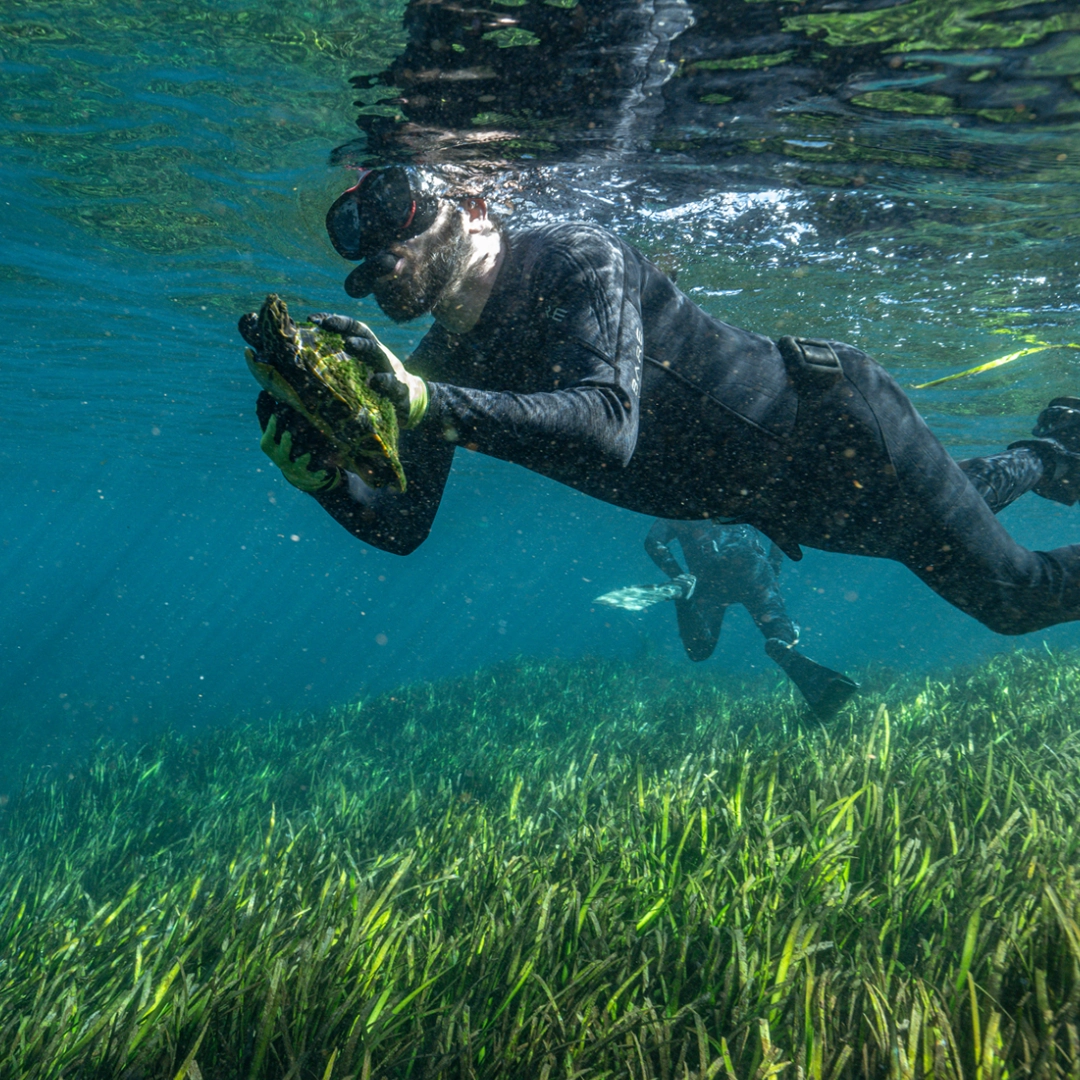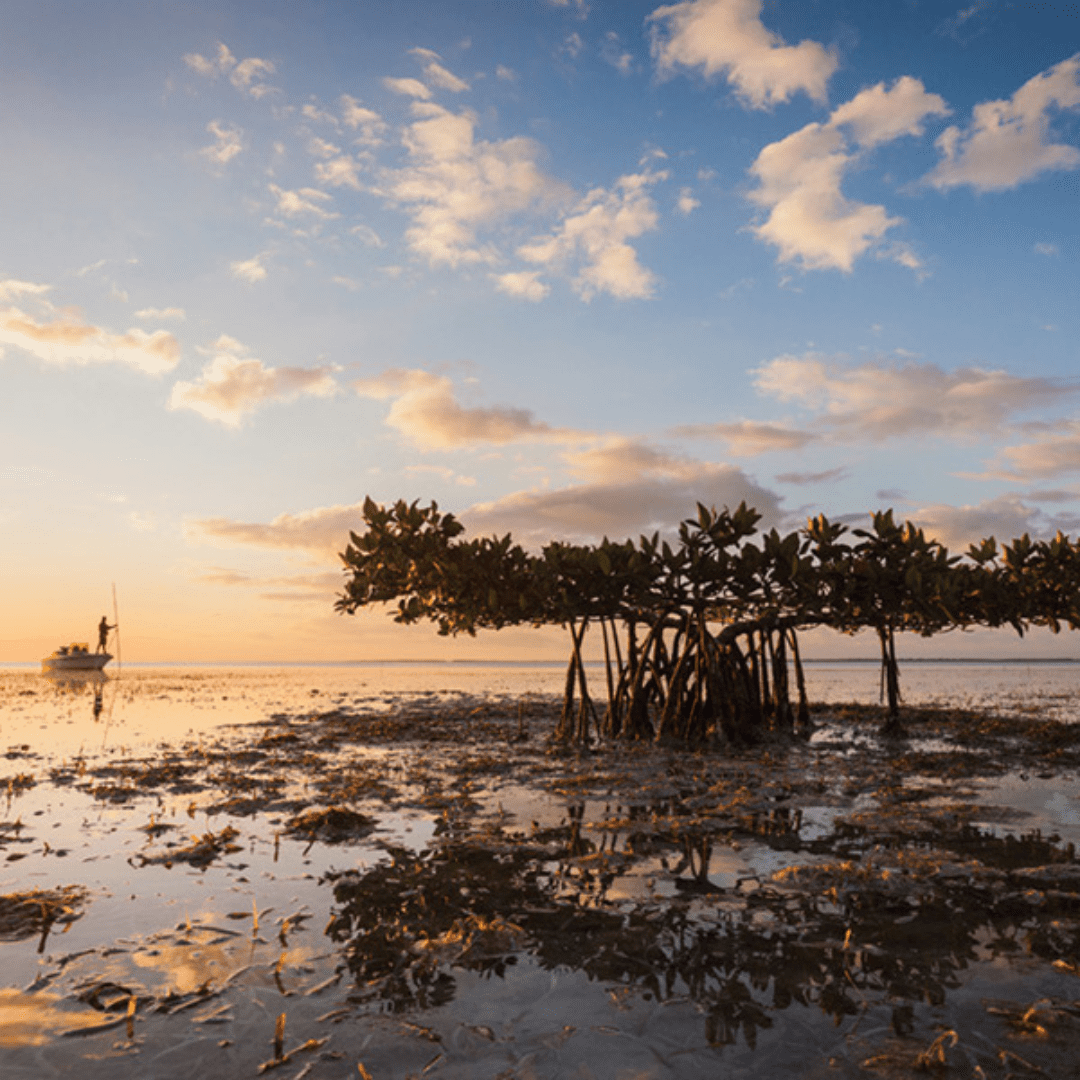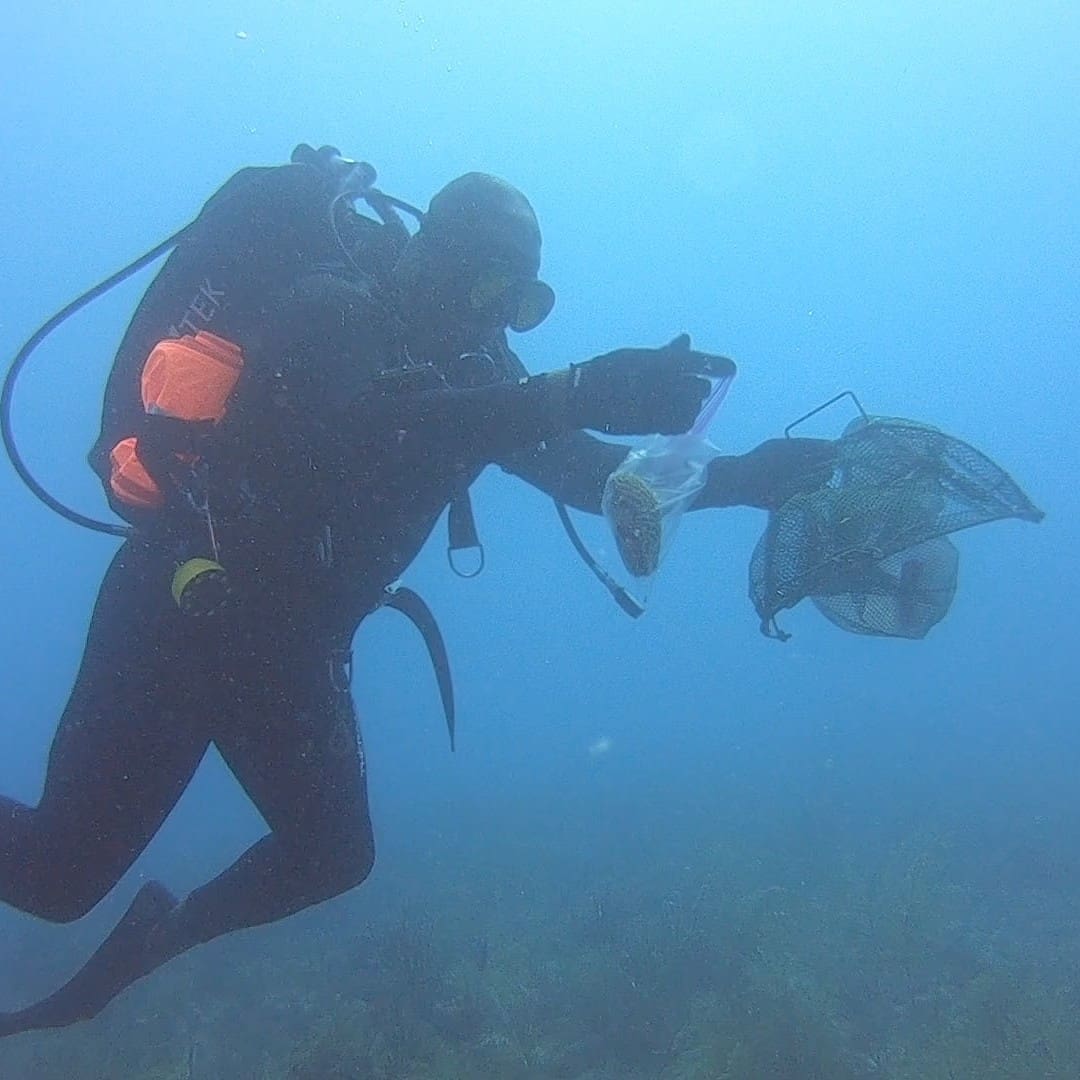by | June 11, 2025
The Butterfly Effect: How At-Home Monarch Surgery Impacted an Entire Species
A North Florida gardener's good intentions save a butterfly’s life and make a dangerous impact on the monarch species as a whole.
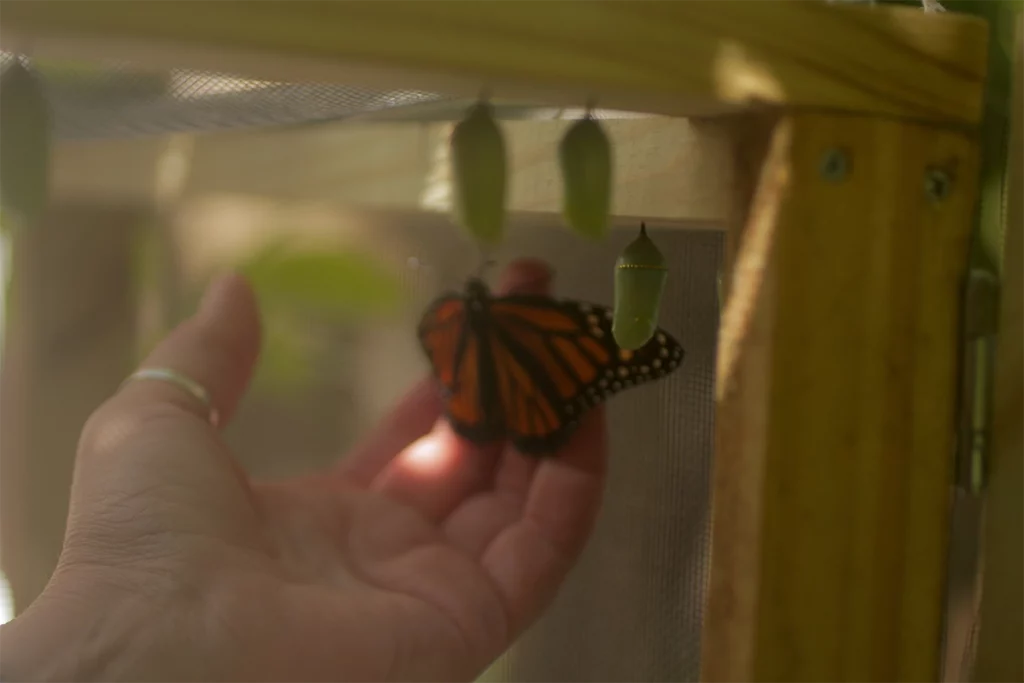
When a butterfly emerges from its chrysalis during a process called eclosion, it dangles upside down and ripples its abdomen like a showoff at the gym, pumping stored fluid into its wings to straighten and harden them. This is the butterfly version of being born.
Every now and then, the butterfly will struggle to break free from its cocoon and emerge with curled and twisted wings that dry out, making flight impossible. I’ve raised and released monarch butterflies for 10 years, and in the past few years I’ve noticed an increasing number that are permanently grounded because their wings cannot unfurl into their orange and black glory. The more this happened, the more often a question nudged me: Could I transplant healthy wings onto a butterfly born with crumpled wings? Could I help them fly? Of course, I turned to the internet, and after three pages of scrolling, I found what I was after: a YouTube video with step-by-step instructions for replacing a butterfly’s defective wings. Posted by a group called Live Monarch, I figured the process had to be humane. I watched intently and took notes.
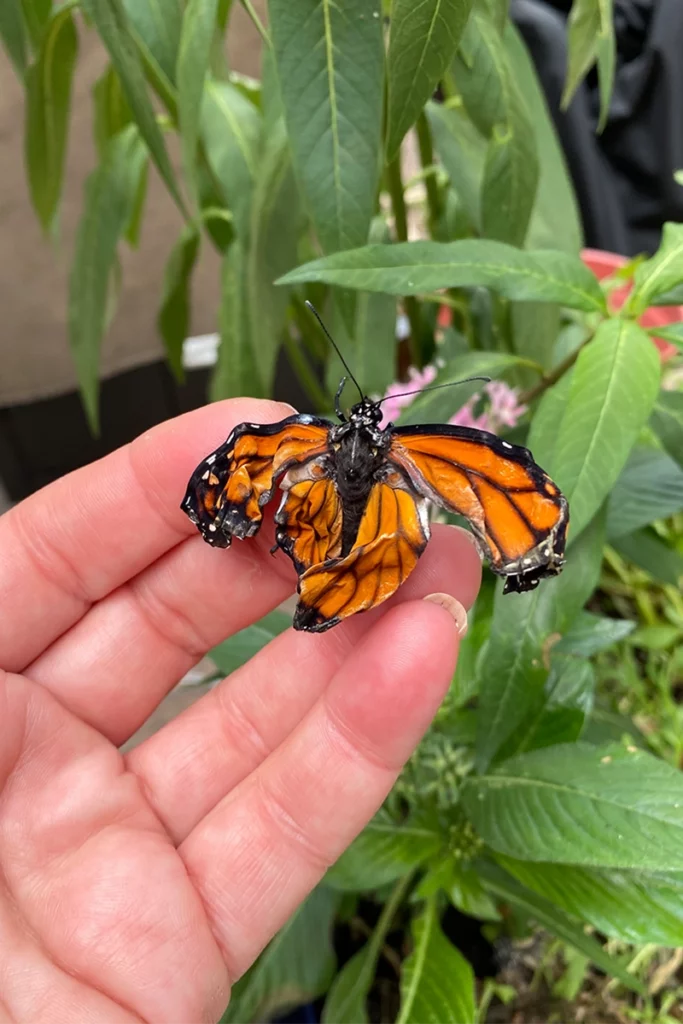
Encouraged, I visited nearby nurseries that sold milkweed, knowing that monarchs sometimes stick around there until their life cycle ends, and told the staff of my plan. With raised eyebrows and sideways glances, some employees agreed to set aside dead butterflies for me so that I could harvest intact wings. I was ready now; it was just a matter of waiting.
Soon, the day of reckoning arrived. I watched as a butterfly emerged from its chrysalis, struggling, her wings drying twisted and curled. This was my chance. I named her Diane after my feisty mother. For almost a week, I fed her orange marmalade from a spoon, her proboscis darting into the little fruit pieces and her body quivering with a sugar rush. I was prepping my patient for transplant surgery, and she had to be strong. The donor wings from the nursery were ready to go.
The Monarch Dilemma
Monarch butterflies are an extraordinary species, and in the fall, thousands of them migrate from the United States to shrinking stands of oyamel firs in Central Mexico. They fly up to 3,000 miles to reach their wintering grounds, hibernate and then return to the United States once it warms up, usually in mid-March. In recent decades, the overall number of these large, healthy butterflies making the trek has declined, and there’s an ongoing—often fervent—disagreement among scientists as to why.
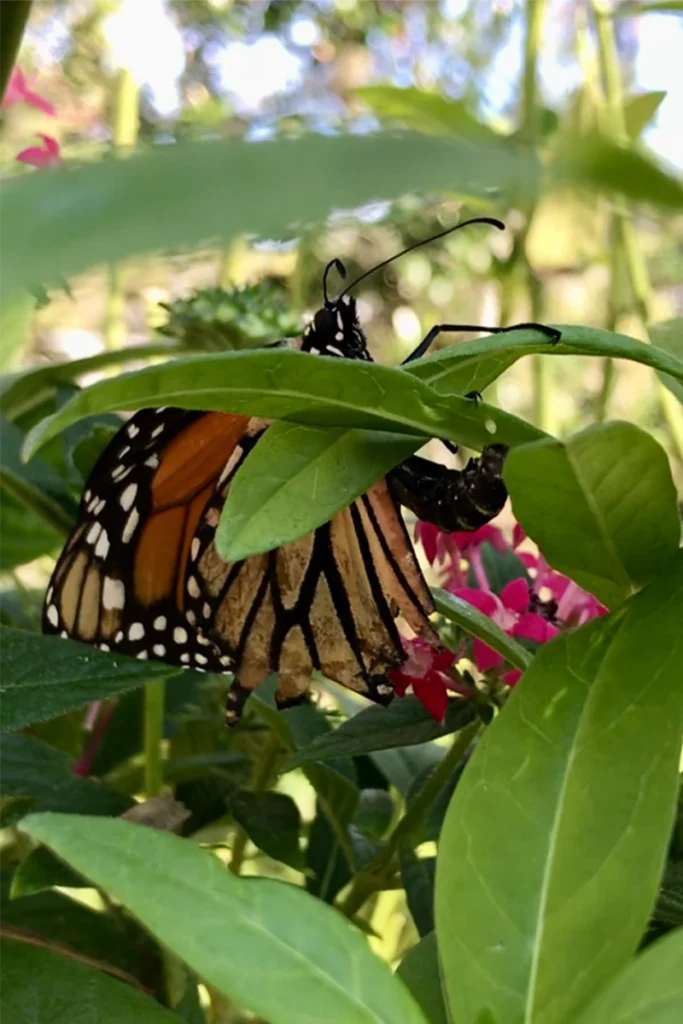
The orange-winged insects depend on milkweed plants for their survival. The females lay eggs solely on this plant, and the eggs hatch into caterpillars that eat only this plant. Without it, the species would quickly become extinct. Milkweed comes in many varieties, and one is suspected of being hazardous to butterfly health up and down the Eastern flyway. Asclepias curassavica, sold in garden centers as Silky Deep Red or tropical milkweed, is an inexpensive, easy-to-grow plant with showy, red-orange blooms that monarchs love. It is native to Mexico and South America and is considered an invasive plant in our neck of the woods. Milkweed plants shelter a parasite known as ophryocystis elektroscirrha, or OE, that can be deadly to monarchs. Infested monarchs shed OE spores when they lay eggs on the plants. In colder climates, tropical milkweed dies back entirely in winter, killing off the parasite. In temperate zones like Florida, where I live, some of the plant’s foliage lives through the winter, allowing OE to accumulate over time. As a result, when those eggs hatch into caterpillars, they eat even more spores. Signs of disease are a bloated body, an inability to completely leave the chrysalis and crumpled or tiny wings. Other experts maintain that tropical milkweed isn’t the only culprit behind the monarch’s population decline, pointing to climate change, urban development and harmful pesticides.
Bring up the subject of monarchs to scientists who’ve spent decades studying them, and you’ll quickly realize that this is an emotionally charged issue. Some biologists point to human interference as the biggest culprit in monarch decline, and at least one research scientist in particular blames backyard gardeners in Florida. University of Georgia research scientist and ecologist Andy Davis, who has spent nearly 30 years studying monarch migration since the late ’90s and publishing his observations, believes the overall decline in the number of migrating monarchs can be traced to the Eastern flight corridor in general and Floridians in particular. His scholarly publications, social media posts and articles on the University of Georgia website all say the same thing: Florida residents need to rip out all milkweed from their backyards—tropical and native. Monarch butterflies flit from one variety of milkweed to the next, he says, creating a cycle of OE infection that never goes away and spreads to other monarchs.
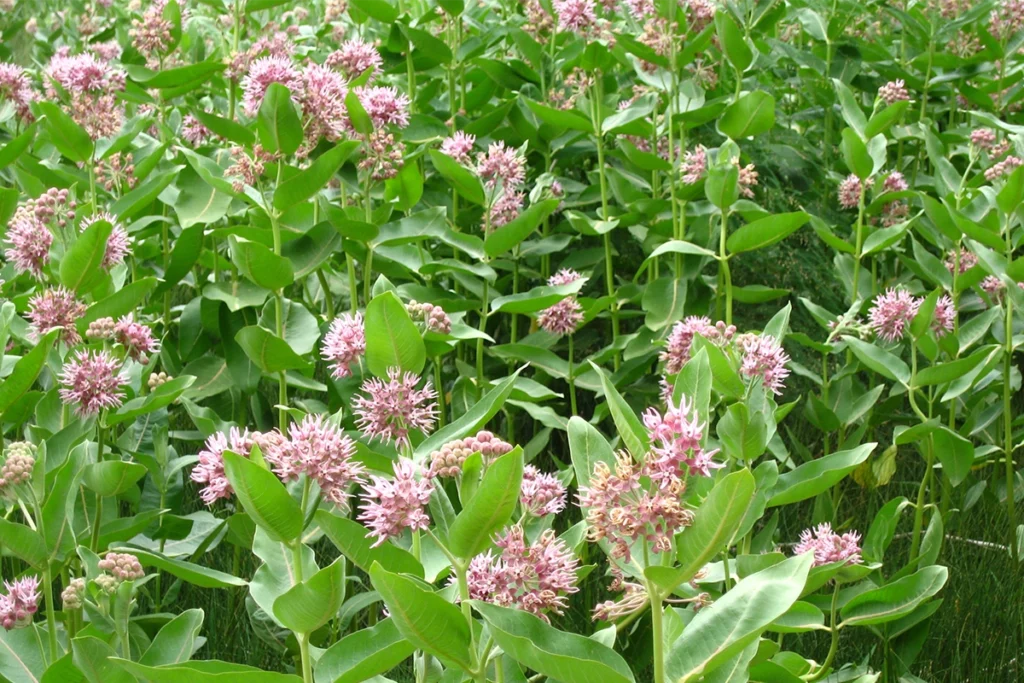
In an “Open Letter to Florida Monarch-Lovers, from a Monarch Scientist” posted online in April 2024, Dr. Davis wrote, “I’m going to get right to the point—you Floridians are not helping the monarchs as much as you think you are, and in fact you are probably causing considerable harm. Nowadays, all of Florida’s monarchs are heavily infected (with OE), largely thanks to people in the state just like you who plant lots of non-native milkweed.” I contacted him to learn more. “A lot of people in Florida hear exactly what they want to hear—keep their milkweed,” he said. “Most of you won’t stop to actually look at the evidence because you simply go with what you want to hear. It’s irresponsible, but no one wants to listen to the facts.” He also inveighed against the practice of hand-rearing butterflies—in any state—because he said that cage-raised specimens are smaller, weaker and less capable of making the annual migration. “I’m sorry to be the bearer of bad news here,” he continues, “because what I’m basically saying here is that people in Florida need to give up their love affair with monarchs.” There was no way I was going to tell this man about my at-home butterfly surgery center.
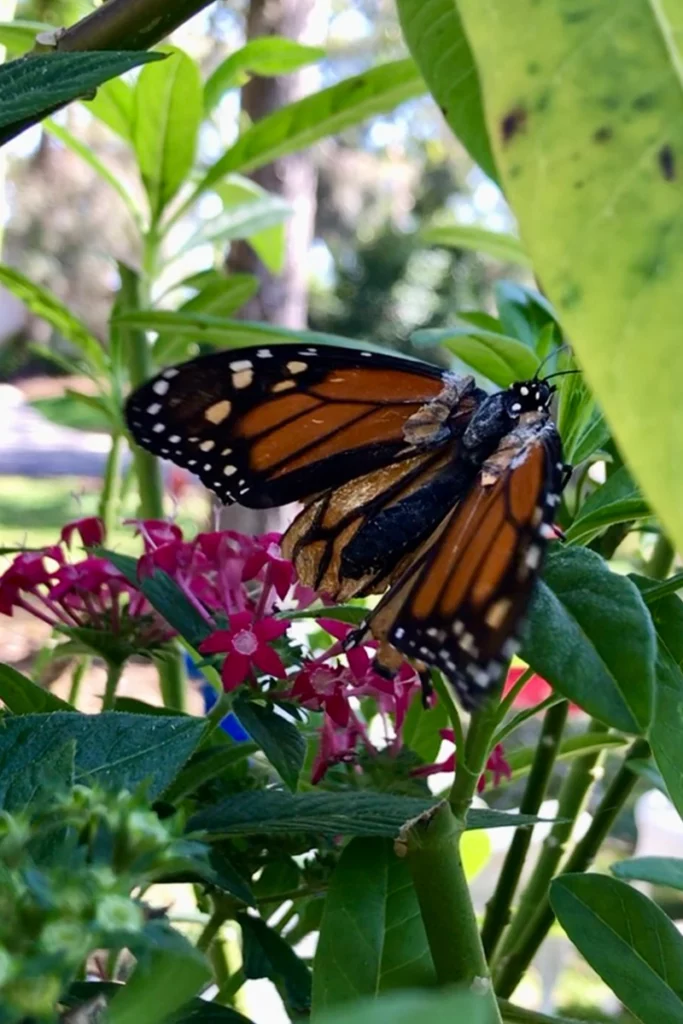
Taking Flight
After days of dining on marmalade in captivity, Diane was getting restless. It was time. I quickly dropped her into a small plastic container and snapped the lid on. Promising I’d see her again, I shut the freezer door and set the timer for three minutes. The goal was to temporarily stun her so that I could perform the transplant with more ease, but the timing was tricky. Too little time in my makeshift cryonics chamber would mean she’d wake up in the middle of surgery and move around too much. Too much time, and she’d die in there. I organized my tools while I waited: contact glue, wire coat hanger, baby powder, scissors, toothpicks and tiny cardboard stints to repair any creases. I waited for the clock to count down, and when I finally took her out of the freezer, my hands were shaking. Even though many scientists maintain that butterflies lack the complex nervous system that feels pain, I felt like I was racing against time.
I worked fast, and my fingers flew. I positioned a curved piece of wire hanger around her abdomen to hold her steady, cut off her crumpled wings, aligned new ones to each side and smeared a little contact cement with a toothpick along those edges. A few taps of baby powder over the glue to dry it, and then I waited.
Her wings started to flutter after a few minutes, fully opening and closing. I stared at this transformed little butterfly; it was as if she was born all over again. I took her outside and put her in the palm of my hand, and after a week of being flightless in a cage, Diane soared. She flew high and she flew strong, doing what she was meant to do, gliding on the air like a little kid’s paper airplane. Within minutes, a male butterfly from high in the trees took a dive for her, no doubt enthralled with this unorthodox monarch lady. Jack had found his Diane, and within the hour, she was laying eggs all over any milkweed leaf she could find. They took off, flying together out of sight.
Diane came back about two weeks later. I saw something flapping around in the grass, and sure enough, it was her. She looked like she’d been partying hard, her wings faded and tattered with some of the glue cracked into old-lady wrinkles. She was having some difficulty getting off the ground, so I stented a tear in her wings with a tiny piece of cardboard, and off she went. I never saw Diane again.
Ripples of Change
We’re conditioned to believe that committing small, helpful acts contributes to the greater good, and it’s hard to grasp the notion that good intentions may be harmful in the long run. Entomologist Jaret Daniels, the curator of Lepidoptera at the Florida Museum of Natural History, was one of the monarch experts I contacted for this story. I decided to tell him about the wing transplants. The University of Florida professor took a beat. “I strongly believe we should not be interfering like this, as compelled as you were to do something positive,” he said. “Don’t try to maximize your production. That’s inappropriate. We need to live with nature, not change it.” My problem, I said, is pulling back and understanding how my small, well-intended actions may ultimately work against the survival of my favorite creatures. He said that since butterfly people tend to be “pretty intense,” the trick is to tweak our enthusiasm as backyard gardeners: let the wasps and lizards eat caterpillar eggs if they want to, and instead, join volunteer projects that strengthen habitats on a larger scale.
Not everyone feels like Andy Davis’s advice to pull all the milkweed in Florida’s backyards is warranted. “Ripping out all the milkweed in this one state is unreasonable and excessive,” Daniels said. He doesn’t even want to ban the sale of tropical milkweed. Instead, he favors planting native milkweed to diffuse the problem of OE, and to help preserve native habitats. He wants to see plant companies propagate more native milkweed and make it more accessible to the public, but feels like completely eradicating tropical milkweed in Florida is a pipedream. “It’s all about money for these big commercial growers,” he says. “Tropical milkweed propagates quickly, it’s showy, and it’s affordable.”
So what is really happening to the monarch’s migration? And why does their survival really matter? After all, butterflies aren’t the best pollinators, not coming close to the job bees do. Dr. Karen Oberhauser is a conservation biologist who’s spent over 35 years studying these insects. She, like others, feels that the monarchs are a flagship species—one that many people recognize and identify with. Monarchs “make connections between people and the natural world that very few other species do. When people protect monarch habitats and make educated decisions about their food sources, they assist other species they’ve probably never heard of.” An encouraging study was just announced this March by the World Wildlife Fund in Mexico that shows the eastern monarch population nearly doubling during the 2024-2025 hibernation season. Scientists primarily attribute this increase to less severe drought along the migration route than in previous years, but the report still seems heartening. Oberhauser cautions, “While any increase is great news, this number is still below the average for the past decade. This gradual decline in their numbers led to the December 2024 recommendation by U.S. Fish and Wildlife Service that monarchs be designated as threatened.”
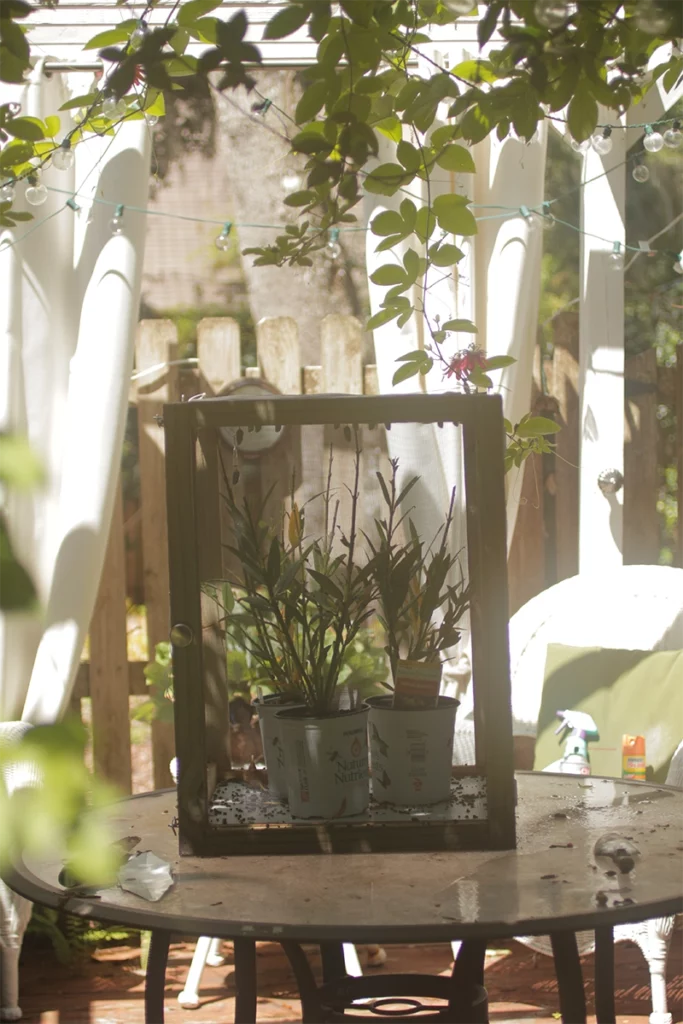
There certainly still seems to be a lot of passionate debate over our beloved monarchs. One cool fall day, I visited the garden center at our Lowe’s store and was surprised to see shelves lined with tropical milkweed. It was October in Florida—the time of year to cut down this plant, not sell it. I wanted to know why it was so prominently displayed, and sought out Christine Jordan, a master gardener familiar with the selling practices of Lowe’s and other big-box stores. She told me that it is frustrating for her to see trucks unloading shipments of plants that she knows will never make it in our climate. “Whatever the growers have, we get. It doesn’t matter if they are appropriate for the season or store location in Florida. We just get it,” she said. “It’s all about profit, not plant selection.” That explained the milkweed in October.
I left Lowe’s and called the grower who supplies the milkweed, wanting to know how such decisions are made. After all, these plants are what commercial farmers call “edibles”—vegetation grown for animal consumption.
I got lucky and reached Justin Hancock, who leads research and development at Costa Farms, a large commercial nursery and plant supplier based in Miami. He’s been with Costa for 12 years and helps identify which plants the company will grow and distribute throughout the state. We talked about monarchs and milkweed, and I wondered if he knew the problems inherent with tropical milkweed, specifically the increased spread of OE. He did. He said that Costa Farms has come under fire from ecologists and gardeners for selling the plant, but they haven’t found cost-effective natives to sell. What he did not know about were the shelves of milkweed just delivered to Lowe’s, and he said he’d look into it.
There are roughly 21 varieties of native milkweed in Florida and more than 100 species in the United States. There are plenty of options, according to Laura Pitts, a St. Augustine landscaper who specializes in gardening with native plants. Her company, called Native Plant Consulting, aims to educate gardeners about the benefits of substituting native plants for familiar shrubs and ornamentals that contribute little or nothing to the ecology of an area. This is a slow process, but it is changing how environmentally-aware hobby gardeners operate. “We can only control what we can in our own little mini habitats,” she said, “and talk to our neighbors and anyone interested and try and get them on the same page.” Education and awareness can also change behaviors that affect the monarch butterflies, but it won’t happen overnight.
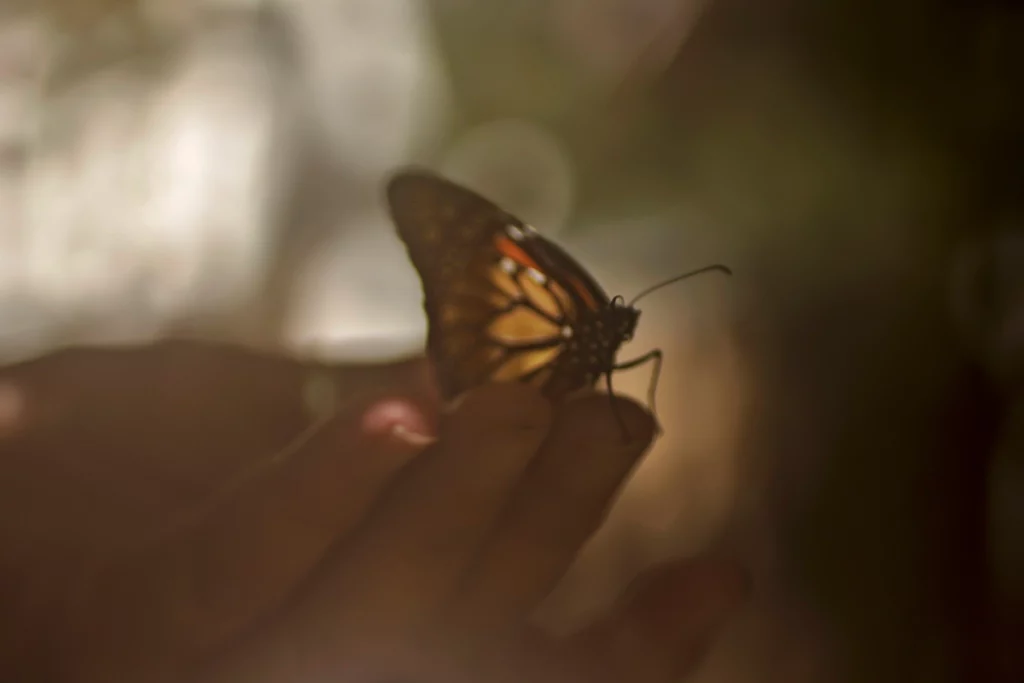
I’ve long been aware of the butterfly effect, the theory that small actions can have much larger consequences over time and distance. But it got real when Justin Hancock called me a few days after our original conversation and told me that Costa Farms would no longer grow tropical milkweed. He explained that in addition to our conversations, he’d heard from an increased number of concerned gardeners over the past year, and his team decided to quit producing this variety beginning in 2025.
I am a lot less hands-on these days with the monarch butterflies that visit my garden, and the tropical milkweed in my yard was cut down last fall. I ordered native plants and threw away all those surgery tools. I realize now that it’s not my place, fooling with Mother Nature like that, but I don’t regret helping Diane fly that day. As her quivering wings smoothed into an effortless flight, the glue that held them on shined like a warrior’s armor in the sun, and I laughed out loud, clapping and cheering her on a flight that led us both to the unexpected.

